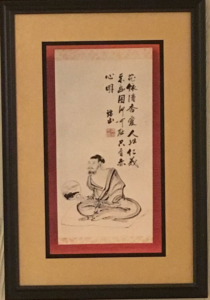
After languishing in prison for about a year, Takéchi Hanpeita, expert swordsman and leader of the insurgent Tosa Loyalist Party, was “the embodiment of bushido” for his stoicism in face of torture, according to his early biographers. Following is a slightly edited excerpt (without footnotes) from Samurai Assassins:
In his weakened state, Takéchi, suffering from chronic diarrhea and lumbago, sometimes doubted his ability to withstand torture. He wrote to a relative on the outside that no matter how much he ate he continued to get thinner. “I’m even shocked myself to see [how thin] my legs [have gotten].” And he even feared that he had developed pulmonary tuberculosis. Rather than risk the possibility of breaking under torture, he considered taking poison. But at his relative’s advice that he would be shamed in death if he were to behave so cowardly, he determined to nurse himself, restore his strength, and brave the pain. Then even if he were to die under torture, he could demonstrate his superior strength to the world by “subduing” his jailers. But two days later he changed his mind again. Though it might be easy for a man to claim that he would “die under torture” rather than talk, unfortunately the jailers would not kill a prisoner so easily, he wrote. Instead they would “break his arms and legs” and “make him suffer” until he finally talked. Only the toughest of men could withstand it. While claiming to be able to withstand torture “around four or five times,” he doubted his ability to withstand it for days on end. “I might have to bite off my tongue” to keep from talking. And so, he asked his relative to send along some poison after all. Whether or not Takéchi’s request was honored is unknown. But the Loyalist Party leader did not have to resort to poisoning himself because as it turned out he was not tortured. Instead, around eight months later, he was condemned to die by his own hand.
[Takechi Hanpeita is the focus of Part II of Samurai Assassins. His self-portrait, which he produced in his prison cell, appears in Samurai Assassins courtesy of Kochi Prefectural Museum of History.]

